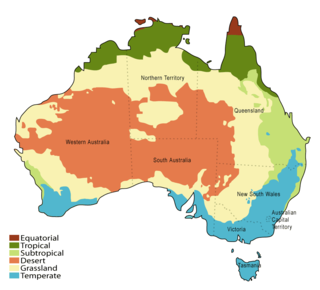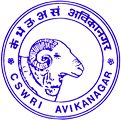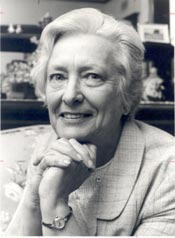
The Merino is a breed or group of breeds of domestic sheep, characterised by very fine soft wool. It was established in Spain near the end of the Middle Ages, and was for several centuries kept as a strict Spanish monopoly; exports of the breed were not allowed, and those who tried risked the death penalty. During the eighteenth century, flocks were sent to the courts of a number of European countries, including France, Hungary, the Netherlands, Prussia, Saxony and Sweden. The Merino subsequently spread to many parts of the world, including Australia and New Zealand. Numerous recognised breeds, strains and variants have developed from the original type; these include, among others, the American Merino and Delaine Merino in the Americas, the Australian Merino, Booroola Merino and Peppin Merino in Oceania, the Gentile di Puglia, Merinolandschaf and Rambouillet in Europe.

Although Australia is mostly arid, the nation is a major agricultural producer and exporter, with over 325,300 employed in agriculture, forestry and fishing as of February 2015. Agriculture and its closely related sectors earn $155 billion-a-year for a 12% share of GDP. Farmers and grazers own 135,997 farms, covering 61% of Australia's landmass. Across the country there is a mix of irrigation and dry-land farming. Australia leads the world with 35 million hectares certified organic, which is 8.8% of Australia's agricultural land and Australia now accounts for more than half (51%) of the world's certified organic agriculture hectares. The success of Australia to become a major agricultural power despite the odds is facilitated by its policies of long-term visions and promotion of agricultural reforms that greatly increased the country's agricultural industry.
Mulesing is the removal of strips of wool-bearing skin from around the breech (buttocks) of a sheep to prevent the parasitic infection flystrike (myiasis). The wool around the buttocks can retain faeces and urine, which attracts flies. The scar tissue that grows over the wound does not grow wool, so is less likely to attract the flies that cause flystrike. Mulesing is a common practice in Australia for this purpose, particularly on highly wrinkled Merino sheep. Mulesing is considered by some to be a skilled surgical task. Mulesing can only affect flystrike on the area cut out and has no effect on flystrike on any other part of the animal's body.

Sheep shearing is the process by which the woollen fleece of a sheep is cut off. The person who removes the sheep's wool is called a shearer. Typically each adult sheep is shorn once each year. The annual shearing most often occurs in a shearing shed, a facility especially designed to process often hundreds and sometimes more than 3,000 sheep per day.

Hendra virus, scientific name Hendra henipavirus, is a bat-borne virus that is associated with a highly fatal infection in horses and humans. Numerous disease outbreaks in Australia among horses have been caused by Hendra virus. The Hendra virus belongs to the genus Henipavirus, which also contains the Nipah virus, which has also caused disease outbreaks.

Pastoral farming is aimed at producing livestock, rather than growing crops. Examples include dairy farming, raising beef cattle, and raising sheep for wool. In contrast, arable farming concentrates on crops rather than livestock. Finally, mixed farming incorporates livestock and crops on a single farm. Some mixed farmers grow crops purely as fodder for their livestock; some crop farmers grow fodder and sell it. In some cases pastoral farmers are known as graziers, and in some cases pastoralists. Pastoral farming is a non-nomadic form of pastoralism in which the livestock farmer has some form of ownership of the land used, giving the farmer more economic incentive to improve the land. Unlike other pastoral systems, pastoral farmers are sedentary and do not change locations in search of fresh resources. Rather, pastoral farmers adjust their pastures to fit the needs of their animals. Improvements include drainage, stock tanks, irrigation and sowing clover.
The New South Wales Department of Primary Industries (DPI) is an agency of the New South Wales Government, responsible for the administration and development for agriculture, fisheries, aquaculture, forestry, and biosecurity in New South Wales. The DPI works to drive innovation in primary industries to improve resilience, productivity and sustainability, and to ensure risks are managed for natural resources, farming and food.
The Finnish Landrace, Finn or Finnsheep is a breed of domestic sheep native to Finland. It is one of several Northern European short-tailed sheep breeds, but is notable for its high incidence of multiple births – it is common for a ewe to have three, four, or even five lambs at once.

The Fowlers Gap Arid Zone Research Station is teaching and research facility, established by the UNSW Australia (UNSW), which is located in the Australian state of New South Wales. in Fowlers Gap in the far north-west of the state. The station is located about 112 kilometres (70 mi) north of Broken Hill. It occupies Western Lands Lease No. 10194, an area of 38,888 hectares, and has been used by scientists in fields ranging from zoology to agriculture, palaeontology and environmental science. The facility has also hosted art and design students on field trips from the university, using purpose-built facilities, including studios.

Tilpa is a town in the Far West region of New South Wales, Australia. The town is located on the Darling River, in the Central Darling Shire local government area, 917 kilometres (570 mi) north west of the state capital, Sydney.

The Appenninica is a modern breed of sheep from the central Apennine mountains of Italy. It is raised principally in Tuscany and Umbria, but also in Abruzzo, Emilia–Romagna, Lazio, the Marche and Campania. The breed was created in the 1970s by cross-breeding and subsequent selection of local breeds such as the Bariscianese, the Casentinese, the Chietina Varzese, the Pagliarola, the Perugina del piano, the Pomarancina, the Senese delle Creti and the Vissana with Bergamasca rams and with the French Ile-de-France and Berrichon du Cher, with the aim of increasing the meat yield. The breed was recognised in 1980 and a herdbook established in 1981. Although this is a medium-coarse wool breed, it is raised primarily for meat.

Meat & Livestock Australia (M&LA) is an independent company which regulates standards for meat and livestock management in Australian and international markets. Headquartered in North Sydney, Australia; M&LA works closely with the Australian government, and the meat and livestock industries. As a multi-faceted authority, M&LA has numerous roles across the financial, public and research sectors. The M&LA corporate group conducts research and offers marketing services to meat producers, government bodies and market analysts alike. Forums and events are also run by M&LA aim to provide producers with the opportunity to engage with other participants in the supply chain.

The history of the domestic sheep goes back to between 11,000 and 9,000 BC, and the domestication of the wild mouflon in ancient Mesopotamia. Sheep are among the first animals to have been domesticated by humans. These sheep were primarily raised for meat, milk, and skins. Woolly sheep began to be developed around 6000 BC. They were then imported to Africa and Europe via trading.
The Department of Agriculture and Fisheries is a department of the Queensland Government which aims to maximise the economic potential for Queensland's primary industries on a sustainable basis through strategic industrial development. The section known as Biosecurity Queensland is responsible for biosecurity matters within the state.

The ICAR-Central Sheep and Wool Research Institute (ICAR-CSWRI) is an Indian Council of Agricultural Research subsidiary commissioned for research, training and extension activities related to sheep and rabbits. The Institute is an autonomous body and is sponsored by the Department of Agricultural Research and Education (DARE), Ministry of Agriculture, Government of India. It is situated in Avikanagar, Malpura, in Rajasthan, India. It works in close liaison with the other ICAR institutes, Central Wool Development Board, Sheep and Wool Marketing Federation, Department of Biotechnology (GOI), Small Entrepreneurs, NGOs, State Animal Husbandry and Khadi gram and Cottage industries.
Professor Jennie Elizabeth Pryce is a quantitative geneticist based in Melbourne, Australia. Jennie is the DairyBio animal program leader in conjunction with her role as principal research scientist for Agriculture Victoria and Professor of animal genetics at La Trobe University.

Mogurnda adspersa is a species of endangered gudgeon that is endemic to south-eastern mainland Australia (the states of South Australia, New South Wales and Victoria. The fish is brown, although the shade becomes lighter near its abdomen. Spots of various colours occur on its sides. After a dramatic population decline in the late 20th century, the fish was thought to be locally extinct in several areas, but was rediscovered both in South Australia and Victoria in the 21st century. Various state governments, the Murray-Darling Basin Authority, and various volunteer organisations have been taking measures to increase the fish's numbers.
Leif Andersson is a Swedish animal geneticist and professor of functional genomics at Uppsala University. In 2014, he won the Wolf Prize in Agriculture alongside Jorge Dubcovsky. He was inducted into the Royal Swedish Academy of Sciences in 2002 and is a foreign member of the National Academy of Sciences. He was elected to the American Philosophical Society in 2017.

Helen Alma Newton Turner was an Australian geneticist and statistician. She was a leading authority on sheep genetics and worked at the Commonwealth Scientific and Industrial Research Organisation (CSIRO) for 40 years.
This article discusses topics relating to genetic engineering within Oceania. Currently New Zealand and Australia require labeling so consumers can exercise choice between foods that have genetically modified, conventional, or organic origins.












